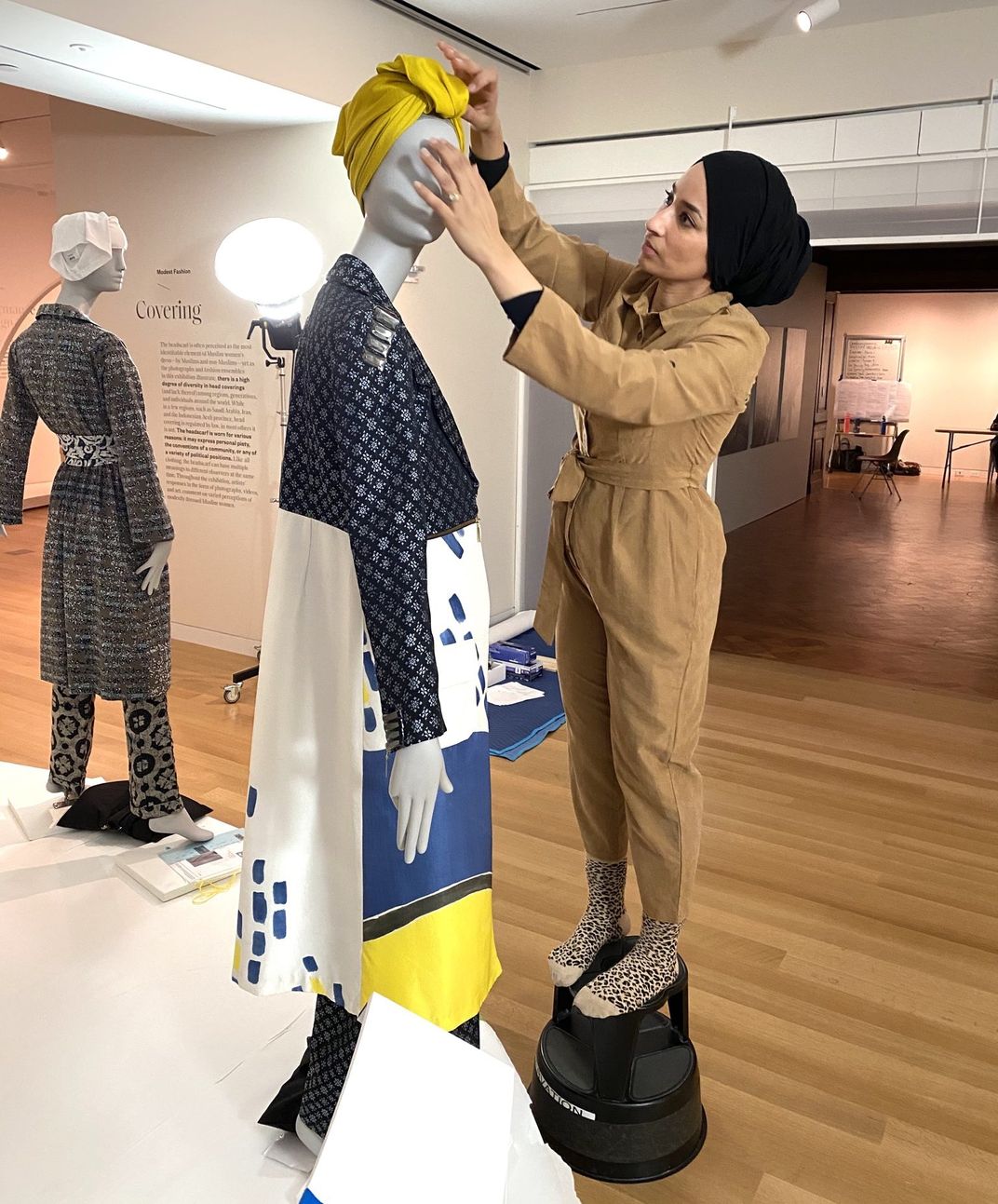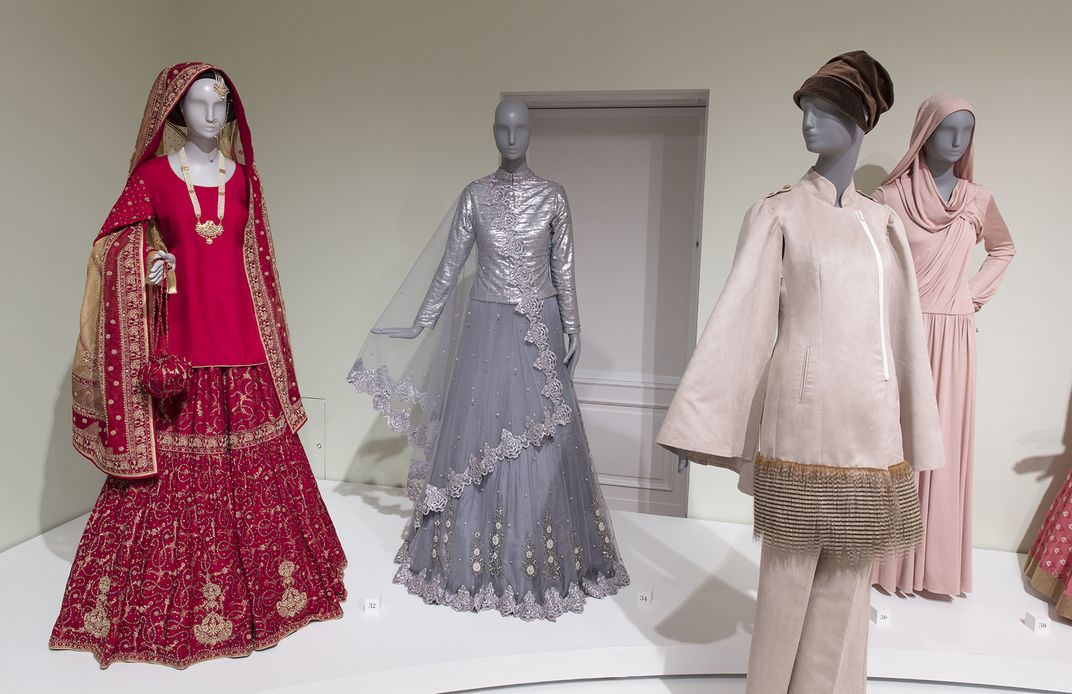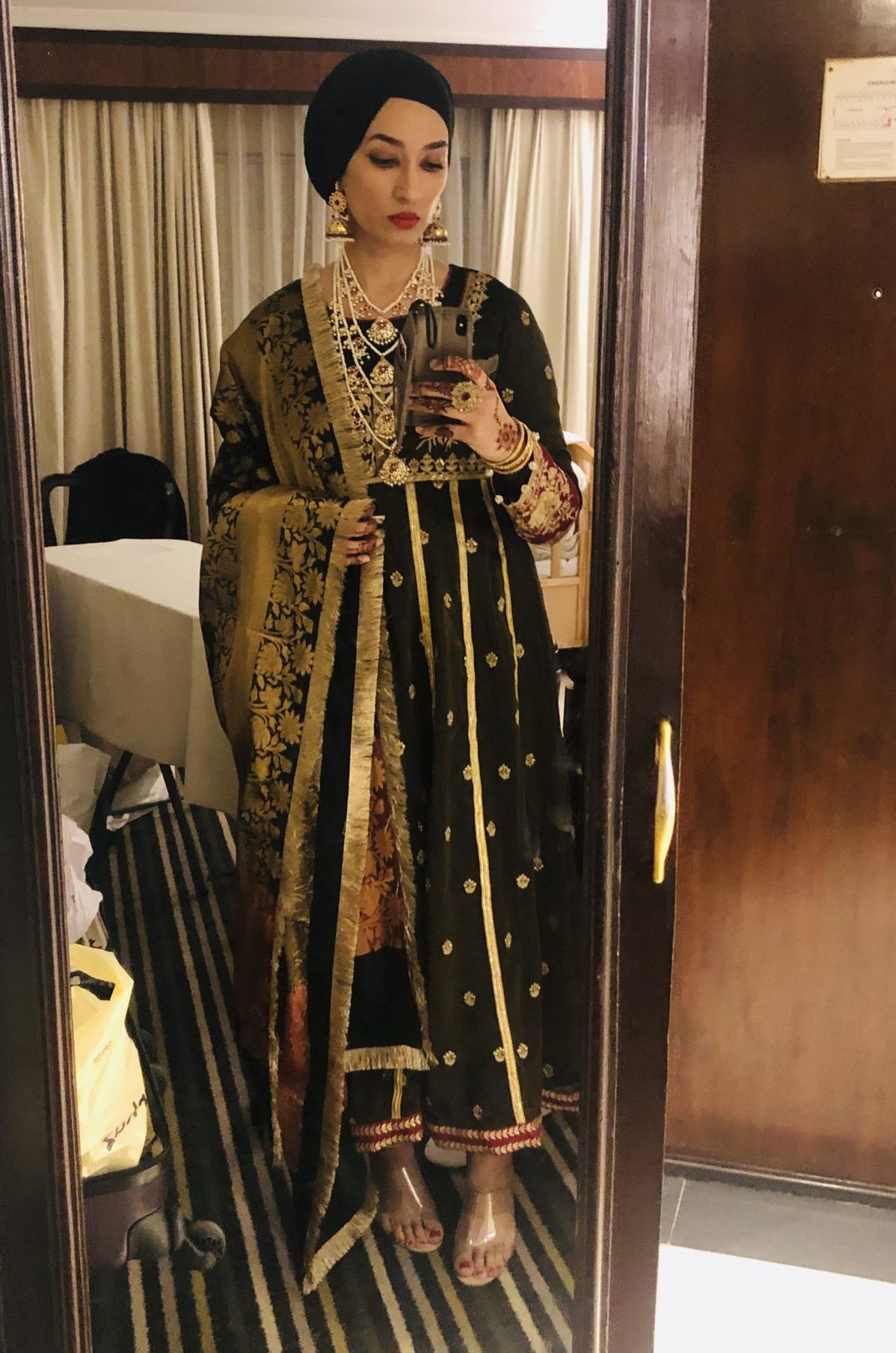COOPER HEWITT, SMITHSONIAN DESIGN MUSEUM
How Contemporary Muslim Fashions are Having Their Day in the Sun
The exhibition Contemporary Muslim Fashions examines the ascendancy of the global modest fashion industry. On view are 80 ensembles, ranging from high-performance sportswear to haute couture, that showcase how emerging and established designers are meeting the needs of stylish Muslim women.
/https://tf-cmsv2-smithsonianmag-media.s3.amazonaws.com/blogging/featured/Web-Diptych-Saba-1536x997.jpg)
The exhibition Contemporary Muslim Fashions examines the ascendancy of the global modest fashion industry. On view are 80 ensembles, ranging from high-performance sportswear to haute couture, that showcase how emerging and established designers are meeting the needs of stylish Muslim women.
For the exhibition, the San Francisco-area image consultant Saba Ali styled the mannequins’ head coverings, which represent a diversity of regional styles and interpretations of the concept of modesty.
In this Q&A, Ali shares her thoughts on modesty, self-expression, and the democratization of fashion.
How did you become the stylist for the Contemporary Muslim Fashions exhibition?
I served as a Muslim liaison and advisor to the de Young museum, the original birthplace of this exhibition. Being a stylist, it was a natural fit for me to also become the exhibition stylist.
How did you prepare to style ensembles crafted by designers from many regions of the world with varying interpretations of modesty?
Living in a diverse community, I’ve been exposed to many styles of modesty. Also, having traveled to numerous countries across the Muslim world, I’ve seen first-hand the regional differences. I like to incorporate those styles into my own work and personal style.

What factors do you consider when deciding what style of head wrap to pair with a particular outfit?
I first look at the whole outfit like a giant piece of artwork, a masterpiece painting. Colors, styles, and fabric design play a major role. It’s a collaborative effort that must mesh with the vibe the designer is trying to embody. I also envision where the outfit will actually be walking and moving. Within the framework of these factors, I try to incorporate the most relevant style.
You loaned one of the ensembles on view in the exhibition: a traditional pakistani wedding ensemble made from red silk and chiffon with metallic embroidery and glass beads. What is the story behind this ensemble?
I was born in Southern California—my mother migrated there in the 70s as a teenager, before she met my father. Despite my upbringing in the States, I’ve always been smitten with the traditional clothes of India and Pakistan. It’s common in our culture for girls to travel back to shop for their bridal trousseau. Our weddings are often multiple day celebrations with different themes and the preparation for all this is best done there, where you have access to high quality textiles, tailors, designers, and so forth. I connect heavily with my culture through its libaas (clothing), so I always knew I would travel back to design my wedding outfit—it’s almost a rite of passage. The outfit represents so much to me: memories of my big day, quality time with my mom on that trip, and now, the chance to pass everything down to my own daughters.

How does it feel to see modest fashion celebrated in an exhibition that has reached audiences in San Francisco, Frankfurt, Germany, and now, New York City?
It’s great, it’s refreshing, it’s needed. It’s surreal, yet it’s overdue. Fashion is the expression of the self, and why can’t the self be expressed as modest? Women’s empowerment doesn’t mean putting everything out there. The misconceptions often rob us of the chance to tell our own story. This exhibition is just one page of that tale.
Why do you think, in recent years, modest fashion has been embraced by a greater number of luxury brands and accessibly priced fashion lines?
It’s the result of globalization as a whole. Online shopping, social media, and visibility across platforms has made retailers aware of who is in charge. It’s partly a numbers game, as brands realize the revenue potential of this market, and that modesty isn’t just a passing fad. It’s here to stay because it is a way of life—not just for Muslim women, but also for those of other faiths. Add to that women who see modest fashion as a refreshing alternative to mainstream styles because they’ve never before been presented with modest options of dress, and you have an exponentially growing phenomenon.
How has blogging and social media helped you connect with people who share your passion for modest fashion?
Modest fashion wouldn’t have the platform it does without the internet, which has given birth to globalization and the democratization of fashion as a whole. My generation has seen the shift, so I must admit I’m more of an observer than a producer of online content. I never got comfy with the share-it-all attitude it takes, and I don’t have much time for it. Still, I enjoy seeing what everyone is doing with the visibility they have been given. It’s inspiring and welds us all together in a powerful way.

What would you like for more people to understand about modest fashion?
That the majority of women observing it are doing it of their own free will. And that is feminism at its best.
Contemporary Muslim Fashions, organized by the Fine Arts Museums of San Francisco, is on view at Cooper Hewitt, Smithsonian Design Museum through August 23, 2020.
Saba Ali is a stylist and mother of four residing in Northern California. Saba left the corporate world after over a decade to be home with her children and, eventually, launch her own styling venture, Style By Design Image Consulting. You can find her on Instagram @style.by.design.